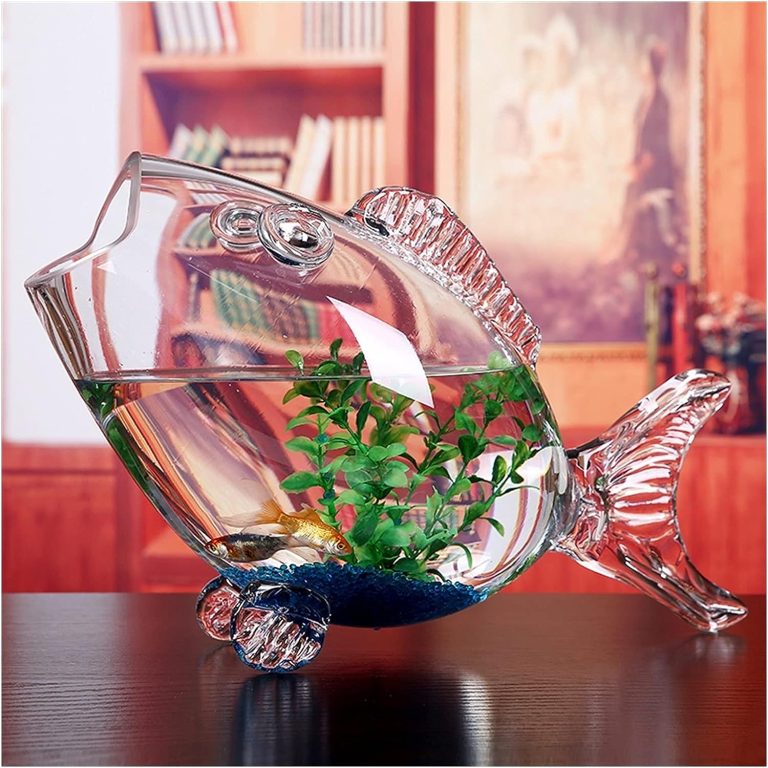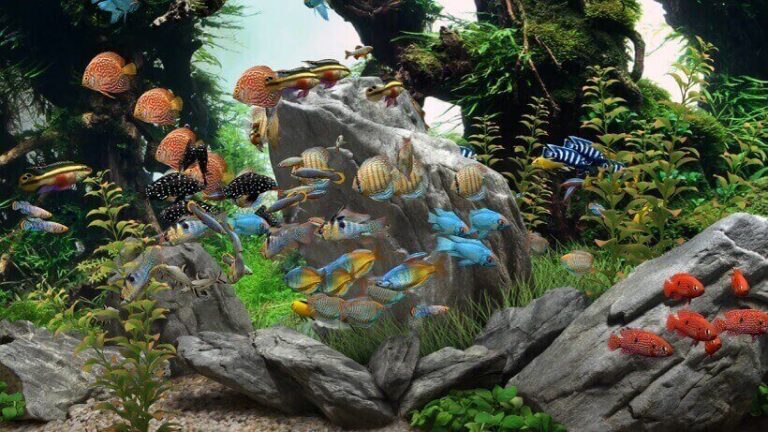Zebra Danio: The Bright Star of the Aquarium
One of the most beloved members of the freshwater aquarium world, the zebra danio stands out with its colorful stripes and energetic nature. From beginners to professionals, many choose this fish for their aquariums. So, what should we know about the zebra danio?
Zebra Danio Species Summary
| Scientific Name: | Danio rerio |
| Origin: | South Asia |
| Diet: | Omnivorous |
| Behavior: | Peaceful |
| Behavior Towards Their Own Species: | Social and active, they usually swim in groups. |
| Swimming Area: | Upper and middle levels |
| Water Temperature: | 18 – 26 °C |
| Water Hardness: | 2 – 12 GH |
| pH Level: | 6.0 – 8.0 |
| Minimum Aquarium Size: | 60 Liters (Larger aquariums are recommended for larger groups) |
| Adult Size: | 4 – 5 cm |
| Breeding: | They lay eggs |
| Life Span: | 2 – 5 years |
| Care: | Quite easy. Suitable for beginners. |
Aquarium Conditions

Aquarium Size:
Due to the energetic and active nature of Zebra Danios, they require ample swimming space. Ideally, an aquarium of at least 60 liters is recommended for a group of Zebra Danios. However, a larger aquarium will provide a more natural and stress-free environment for your fish. For larger groups, this volume should be further increased to enhance the fish’s range of motion.
Decoration:
Swimming Space: Due to the active nature of the Zebra Danio, it’s important to leave a large portion of the aquarium open to create sufficient swimming area. Plants: Fine-leaved live plants can provide hiding spots for Zebra Danios and also suitable areas for laying eggs. Plants also improve water quality and help to keep nitrate levels in check. Logs and Stones: Logs and stones should be added to create natural refuges. This helps your fish feel more secure. However, when adding decorations, care should be taken to ensure there are no sharp edges or protrusions; this prevents injuries to the fish. Filtration: Zebra Danios prefer clean water, so an effective filtration system is needed.
Mechanical Filter:
Removes solid waste from the water. This helps keep the water clear. Bio-Filter: Beneficial bacteria provide biological filtration by converting ammonia and nitrites to nitrates. This helps maintain high water quality.
Chemical Filter:
Chemical filters containing materials like activated carbon improve the color, odor, and taste of the water. However, these filters need to be replaced regularly. Careful filtration prevents the accumulation of potentially harmful substances like nitrates, nitrites, and ammonia in the aquarium. Levels of these substances should be tested regularly, and water changes should be carried out if high levels are detected.
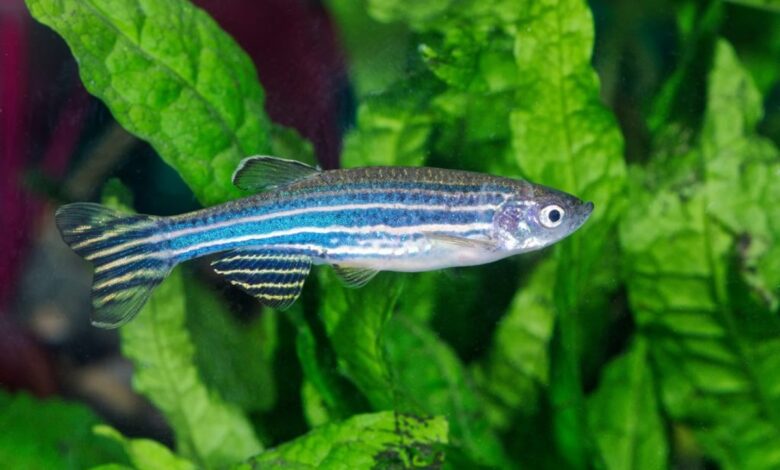
Feeding Nature of the Diet:
The Zebra Danio is an omnivorous fish species, meaning their diet includes both animal and plant-based foods. Such a diet reflects the diverse nutrients the fish would consume in its natural habitat.
Flake Foods:
Quality Flake Food:
Foods specially formulated for Zebra Danios should make up the main part of their diet. These foods contain essential vitamins, minerals, and proteins required by the fish.
Feeding Frequency:
It’s beneficial to feed them twice a day, only providing as much food as they can consume in one sitting. Overfeeding can decrease water quality and adversely affect the health of the fish.
Live and Frozen Foods:
Live Food: Live foods like water fleas, micro worms, Daphnia, and Artemia are excellent protein sources for Zebra Danios. Such foods also satisfy the fish’s hunting instincts.
Frozen Food: Frozen foods like brine shrimp (artemia), mysis shrimp, and bloodworms offer the nutrients of live foods but have the advantage of longer storage convenience. They should be provided as part of the regular feeding regimen.
Frequency: Live or frozen foods can be given several times a week, alongside or in place of flake foods.
Vegetable Foods:
Some Zebra Danios enjoy being fed directly with green vegetables or vegetable feeds like algae tablets. Boiled peas or lettuce can be a nice treat for these fish. However, it is recommended that such foods are given only occasionally.
Feeding Tips:
Variety: Diversity in their diet ensures the fish receives all the necessary nutrients and prevents digestive issues.
Feeding Time: Zebra Danios should generally be fed twice a day, typically in the morning and evening. Each feeding should consist of an amount they can consume within 2-3 minutes.
Cleaning Residue: Leftover food in the aquarium after feeding should be promptly removed, which helps maintain water quality.
Proper feeding habits are key to keeping the Zebra Danio healthy and active. A balanced and diverse diet will help the fish retain vibrant colors, strengthen its immune system, and generally lead to a longer and healthier life.
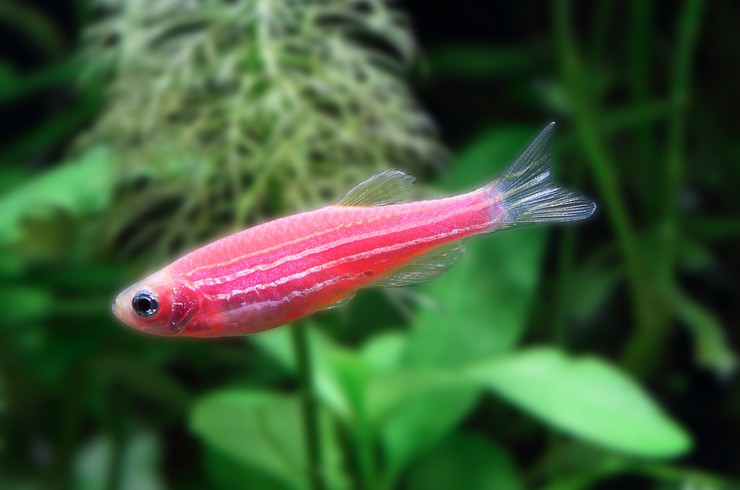
Breeding
Preparation Stage:
It’s essential to set up a special breeding tank for the Zebra Danios. This tank provides a simpler and calmer environment compared to the main tank. Ideally, a tank of 20-30 liters can be used.
Tank Base:
Egg-Laying Mats: To protect and shelter the eggs, egg-laying mats should be added. The eggs fall into the mat, preventing the adults from eating them.
Fine-Leaved Plants: Plants provide additional hiding spots for the eggs and create a natural environment within the tank. Fine-leaved plants, like Java moss, are ideal for this purpose.
Water Conditions:
Temperature: To ensure proper development of the eggs, the water temperature should be maintained between 24-26°C.
Water Quality: High oxygen levels and low nitrate levels are essential for the healthy growth of the eggs and fry (baby fish). It’s crucial to maintain water quality with regular water changes.
Pair Selection and Breeding:
Pairing: The optimal pairing ratio for Zebra Danios is usually two females to one male. This prevents males from overly pressuring the females.
Encouragement: To encourage Zebra Danios to breed, you can feed them protein-rich live foods.
Egg Laying: Females can lay hundreds of eggs at a time. The eggs are typically transparent and can either float in the water or sink to the bottom.
Separating the Parents: After the eggs are laid, the parents should be removed from the breeding tank to prevent them from eating the eggs. The eggs typically hatch within 2-3 days, revealing the fry (juveniles).
Fry Care:
Fry should be fed with high-protein feeds and infusoria (tiny aquatic creatures). This helps them grow and develop rapidly.
Juvenile Fish Care:
Once the young fish grow large enough over a few weeks, they can be returned to the main tank or further raised in a separate growth tank.
Breeding Zebra Danios is a process that requires attention and care but is a rewarding experience. Providing ideal conditions for the growth of healthy young fish is key to success for the aquarist.
Health and Diseases
General Characteristics:
Zebra Danio is generally known as a hardy and healthy fish, but this doesn’t mean they are entirely immune to diseases. A fundamental understanding of health and diseases ensures these fish lead a long and healthy life.
Preventative Care:
Balanced Diet: Offering a variety of feeds for Zebra Danios can help prevent nutritional deficiencies. Foods rich in vitamins and minerals can boost overall health.
Water Quality: Regularly checking water parameters (pH, nitrate, nitrite, and ammonia) and keeping them within ideal ranges can help prevent many diseases.
Quarantine: Quarantining new fish for at least 2-4 weeks before adding them to the main tank can prevent the spread of potential diseases.
Common Diseases and Treatments:
Ich (White Spot Disease): This is characterized by white, salt-like spots appearing on the fish’s body. It can be treated with salt treatments at higher temperatures and specific medications.

Swim Bladder Disease: This can lead to balance issues. It often results from overfeeding or poor-quality feed. It can be treated by adjusting the diet and fasting.

Fungal Infections: These appear as cottony white growths on the fish’s body. They are treated with specific antifungal medications.
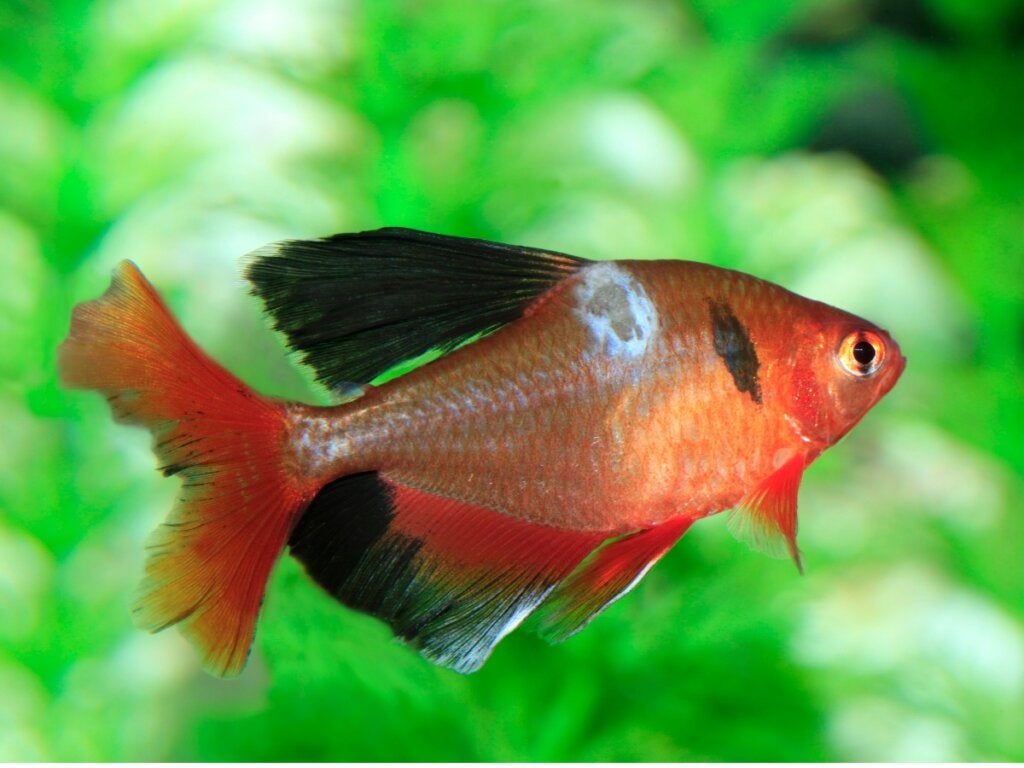
Parasitic Infections: Parasites: External parasites can cause sores or abnormal behavior in fish. These can be managed with anti-parasitic treatments.

Pay Attention to Disease Symptoms:
- It’s crucial to act quickly if any abnormalities (color changes, difficulty swimming, spotting, etc.) are noticed.
- Medication Use: Every medication is different, and not all work the same way for every species of fish. Always read the label carefully and adhere to the recommended dosage.
- Stress Prevention: Stress can make fish more susceptible to diseases. To reduce stress, ensure proper tank conditions and maintain a comfortable environment for the fish.
In conclusion, paying attention to the health of Zebra Danio ensures they lead a long and happy life. Preventative care, regular observation, and swift treatment minimize potential health issues.
Zebra Danio is an excellent choice for both novices and experienced aquarists. With careful care, clean water, and balanced nutrition, these fish can live a long and healthy life.





